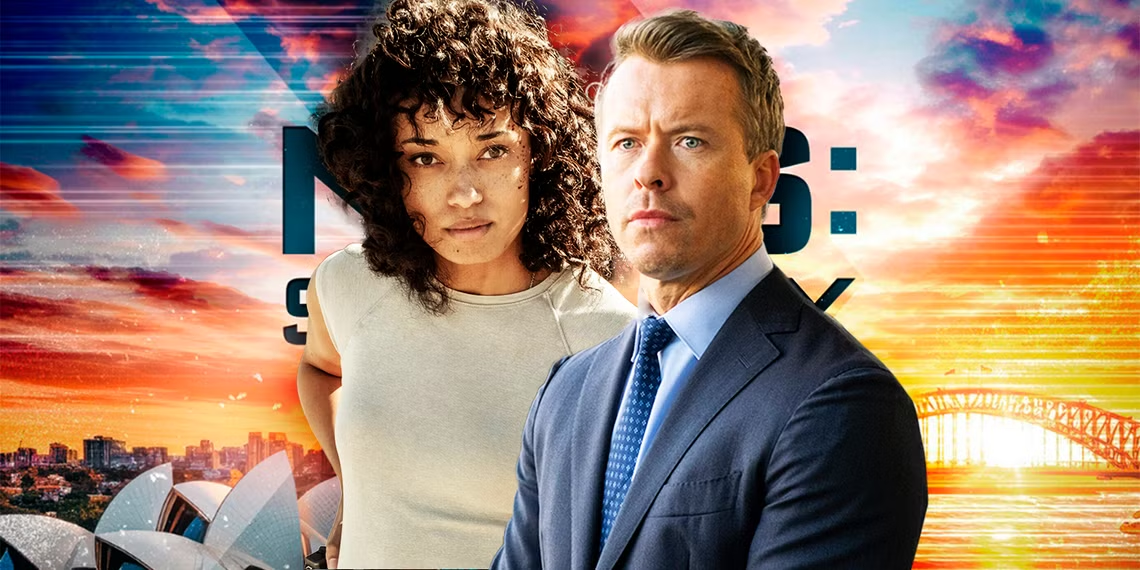
NCIS: Sydney Season 2, Episode 3 Review: A Tearjerker Spy Story Elevated by the Cast
Michelle Mackey wearing a cream top and JD Dempsey wearing a grey suit in front of NCIS: Sydney logoimage created by CBR
Quick Links
NCIS: Sydney Gets Plenty of Mileage Out of Its 1980s References
NCIS: Sydney Season 2, Episode 3 Successfully Leans on Emotion
NCIS: Sydney Turns JD Dempsey Into Walking Comic Relief
The following contains major spoilers from NCIS: Sydney Season 2, Episode 3, “Back in the USSR,” which debuted Friday, Feb. 21 on CBS.
NCIS: Sydney Season 2, Episode 3, “Back in the USSR,” ventures into familiar territory. The NCIS franchise as a whole enjoys telling stories that combine Naval drama and espionage, including those connected to the Cold War. One recent example is NCIS Season 22, Episode 5, “In From the Cold.” This episode resembles that one; they’re both spy plots with a heavy dose of sentimentality.
“Back in the USSR” starts when the body of a missing Naval officer is found buried under a concrete slab. As the Sydney team investigates, it becomes apparent that Lieutenant Harvey Wilson was involved in espionage, but they have to figure out to what extent. It’s an episode that’s led by the performance of William McInnes as “Doc” Roy Penrose, with an assist from Todd LaSance committing to one of the most random comedic subplots in show history.
NCIS: Sydney Gets Plenty of Mileage Out of Its 1980s References
Season 2, Episode 3 Gives a Different Meaning to ‘Period Piece’
NCIS Sydney – Time Capsule of the Mid-80’s (Clip)
Play Video
“Back in the USSR” establishes early that Harvey Wilson went missing in 1985, and thus the opening sequence is jam-packed full of comments about the 1980s. Wilson’s Naval Academy ring has his graduation year listed as 1981. He’s buried with a Sony Walkman — yes, a cassette tape player — beside him. At one point, he’s referred to as a “time capsule.” At least the episode avoids really obvious 80s humor, the same way that Season 2, Episode 2, “Fire in the Hole” steered clear of painful pirate jokes. But it’s very clear what era the story is playing in. And there have been plenty of spy stories in that time period, so NCIS: Sydney then has to establish why this one matters.
The script answers that question by taking its premise one step further and making the details of the era relevant to solving Wilson’s case. The differences in nerve toxin between the 1980s and today becomes relevant. That Walkman plays a critical part in the final scene of the episode. This isn’t just lip service; it adds something to the case of the week. As the story progresses and more details are revealed about what happened in the past, it can take a moment to keep up with the revised timeline. But there’s a sense of place to this episode that’s resolved without using any kind of flashbacks or pop culture name drops. And that helps, because the actual whodunit is a little bit predictable.
Young Gibbs wearing an NIS cap and Mike Franks wearing a tan jacket with NCIS: Origins logo
Related
The NCIS: Origins Episode That Surpasses the Original Series
NCIS: Origins Season 1, Episode 13, “Monsoon” is a moving commentary on the struggles of Vietnam veterans, even if it’s a flawed prequel episode.
NCIS: Sydney Season 2, Episode 3 Successfully Leans on Emotion
The Sad Scenes Smooth Over Some Predictable Plot Points
NCIS: Sydney Season 2, Episode 3 is clearly relying on emotion to keep the audience interested. The plot itself has plenty of twists, but only some of them would be considered surprising. Of course Wilson is originally suspected of being a double agent, before his name is cleared. Of course he’s got a grieving spouse who gets help from the NCIS agents in finding a sense of closure. And of course the old friend of one of the main characters is also considered a bad guy for a litle while. Even the reveal of the ultimate villain — the Russian consul-general Lina Bukovska, a former KGB agent — is fairly obvious, given how the character is written slightly over-the-top. Anybody who is a regular watcher of TV procedurals can suss out at least half the episode.
Foreign Minister Quinn: A Russian-sanctioned murder of a US citizen on Australian soil. Is that what we’re looking at?
That foresight doesn’t stop the audience from connecting to the subplot involving “Doc Roy” Penrose and his longtime friend, OSIA agent Terry. Terry arrives as the person who allegedly investigated Wilson’s disappearance the first time around, but NCIS: Sydney takes that idea and goes from “Terry is a double agent” to “Terry was only working with the KGB to afford medical care for his dying wife.” That would be sad enough, but then the script serves up another dose of heartbreak when he’s exposed to nerve toxin. One of the final beats in the episode is the team finding Terry at his wife’s gravesite,

